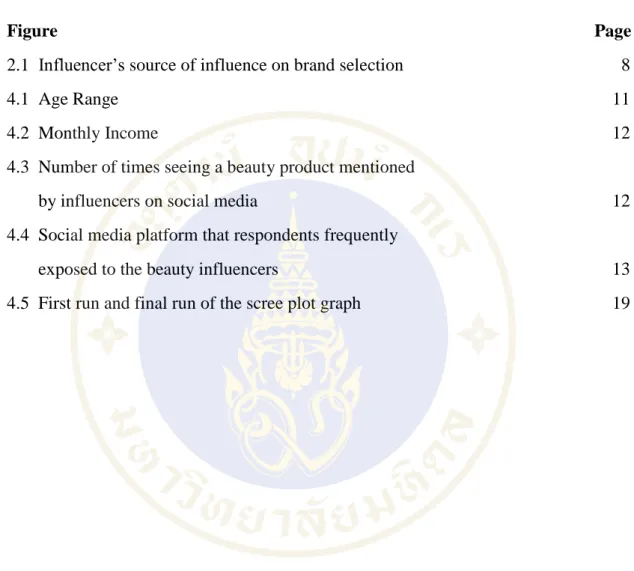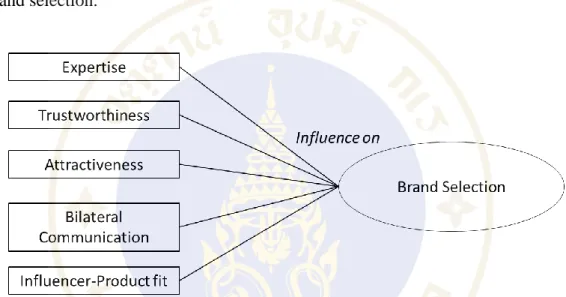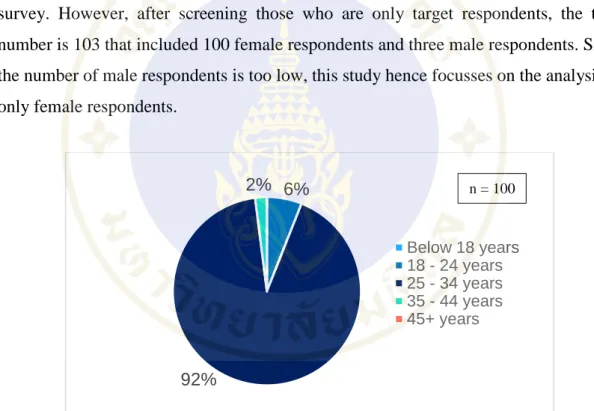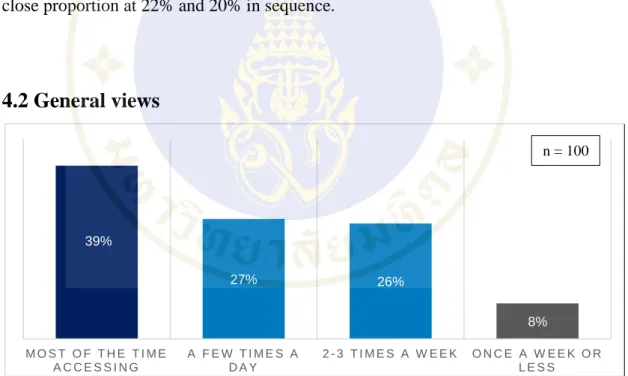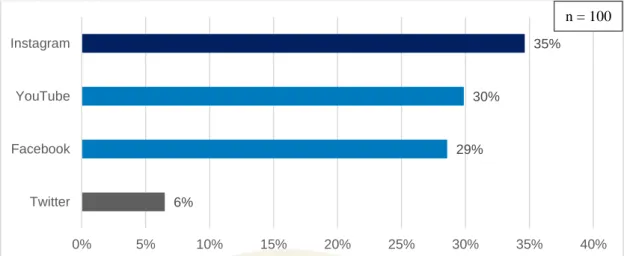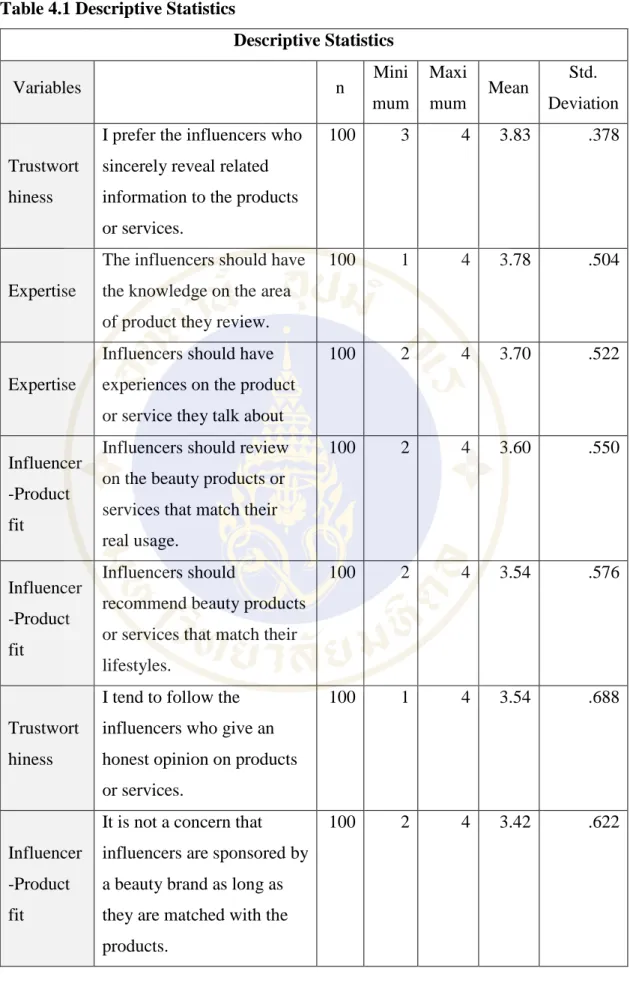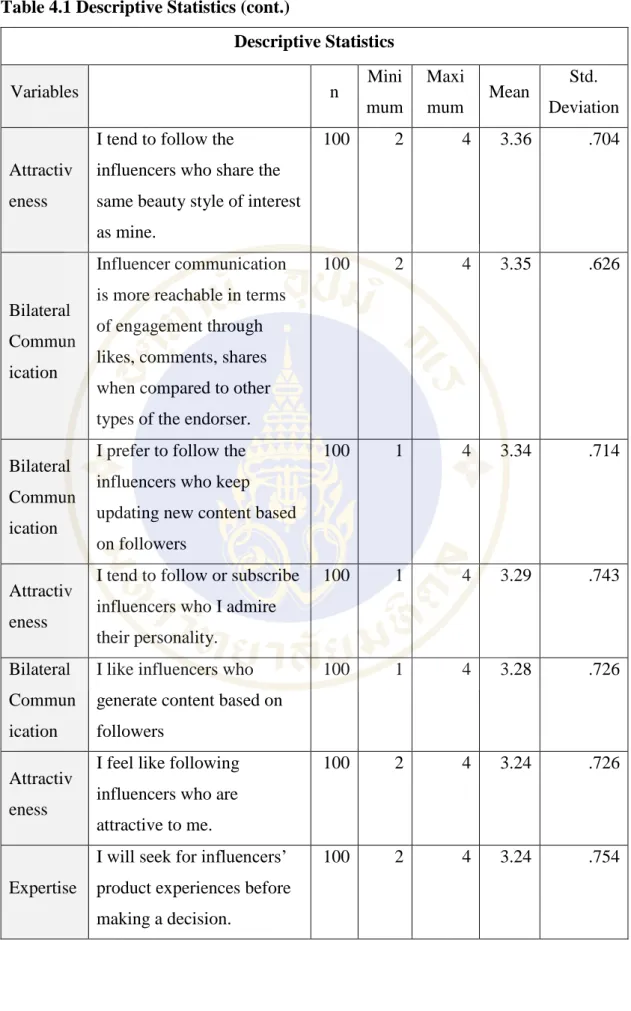THE INFLUENTIAL FACTORS OF SOCIAL MEDIA INFLUENCERS IN SELECTING BRANDS FOCUSING ON BEAUTY CONTENT IN THAILAND. The purpose of this paper is to identify the key success factors that social media influencers have in influencing beauty brand selection in Bangkok, Thailand. Respondents are social media users who have experienced influential social media content related to beauty products or services within the past 3 months.
The findings of this study illustrate that the high frequency of time the audience is exposed to the influencers and social media platforms such as Instagram influence the intention to purchase. While the credibility and attractiveness of the influencers influence the brand selection of beauty products or services. Although today, social media influence in the beauty space has grown dramatically and as a marketing tool is widely used for various purposes such as building buzz for mass awareness, driving consideration through reviews or expanding the fan base .
Rarely has research been done on the key elements that influencers have and do to successfully influence brand perception of beauty products or brands. This research aims to identify the factors that enable social media influencers to successfully influence consumer brand choice. The context of this research will focus on the perspectives of the audience, followers or consumers towards the influencers in Thailand whose content is related to beauty.
The expected benefit of this study is to be the criteria for the brand or advertiser to choose the right influencers, as well as for those who aim to improve marketing strategies based on the results.

LITERATURE REVIEW
Theoretical Framework
To identify a set of factors that help to understand the reasons behind the acquisition of achievements of these social media influencers. Several frameworks from past research related to sources of credibility and trustworthiness were used. In the context of a social media influencer, the factors in the model had the same essential properties in building credibility.
The original theories prior to this version of Ohanian's theory included (1) source credibility model; expertise and reliability indicated (Hovland, Janis. & Kelley, 1953), and (2) source attractiveness model (McGuire, 1985) which indicates the important factors to be persuasive as a communicator, consisting of Similarity, Familiarity and Likeability. The source credibility theory focuses on the combination of factors that produce credibility to an individual. Therefore, another framework is brought forward to support and combine elements that may produce the effectiveness of those social media influencers' performance.
Within the model there are some factors that overlap with the source credibility model discussed earlier: expertise, value congruence - mentioned as similarity and benevolence, where their description can be referred in the same direction as the components of trustworthiness in the previous model. The most important element that will be discussed based on this model is therefore bilateral communication, also called two-way communication.
The influencer's source of influence on brand selection
- Expertise
- Trustworthiness
- Attractiveness
- Bilateral Communication
- Influencer-product fit
- The influencer's influence on brand selection
McGuire (1985) raised a motive dimension that source attractiveness is the factors that a person who would be an influencer must acquire. To gain the acceptance of the messages by the followers, the influencer must improve their attractiveness and build their self-esteem. Acceptability is another dimension to choose endorser by the brand, as the previous study indicated that it has a positive impact on consumer's purchase of the product (Premeaux, 2009; Prieler, Kohlbacher, Hagiwara & Arima, 2010; Simsek , 2014; Um, 2013).
As indicated in the earlier section, bilateral communication is the selected element from the modified model of organizational reliability. The influencer usually uses two-way communication and continuously motivates the audience through interaction and involvement. According to Hamann (cited by Biaudet, 2017), engagement in terms of reactions, likes, comments and shares is another indicator to evaluate how good the relationship between the influencer and his follower is.
In addition to the four constructs mentioned above, which illustrated trustworthiness in an individual influencer, it still lacks the brand and product dimension in terms of the match between the influencer and the content to be offered. It means that although an influencer messaging an expert in that specific area of a product, if the influencer's image or lifestyle doesn't seem to match the brand or product, it tends to negatively impact the ability to influence others to follow the message. According to Sofie Biaudet (2017), the influencer marketing campaign must find what is appropriate for the brand, product or service as it is the most important part of using this marketing tool.
Miller and Ginter (1979) argued that brand choice is a consumer behavior that results from the influence of situational factors. Brand selection is related to many other factors when it comes to branding, such as recognition, value and position. It is usually the result of an attitude towards the brand, whether negative or positive.
Previous research results show that there is a strong correlation between a positive attitude and brand choice (Alvi & Mohsin, 2012). In this study, brand selection is considered as the dependent variables resulting from the influencing factors of the social media influencers. Some of them explained that brand selection can be a situational factor that can lead to different consumer behavior (Miller & Ginter (1979), so some explained that brand selection can be influenced by attractive advertising messages Biehal, Stephens and Curlo (1992) & Spears & Singh (2004).
Hypothesis Development and Conceptual Framework
RESEARCH METHODOLOGY
- Research Design
- Data Collection and Analysis
- Questionnaire design
- Screening information
- General information
- Specific question
- Demographic information
Steven (1946) defined the nominal scale as "the rule of assigning numbers informs one to which category the data value belongs." Among all the types of scale that Steven introduced, including nominal, ordinal, interval, and ratio, the nominal scale was the least controversial. The reason is that the measurement only requires unique identifiers that regardless of numerical values such as A-B-C or 1.-2.-3. Are you a social media user (Social media platform like YouTube, Facebook, Twitter or Instagram).
The questions will serve as a guide for respondents to first familiarize themselves with the context of the survey before tackling specific questions. This part will use an interval, Likert scale, type of question with answers ranking from 1 to 4. The scale has a fixed choice that the format is designed to measure attitudes or opinions through degrees of agreement or disagreement (Bowling, 1997; Burns, & Grove, 1997). .
This allows the study to measure the values of some factors that have an impact on each other. This part will apply the nominal scales to label the variables that are the questions, including age, gender and education.
RESULTS AND DATA ANALYSIS
- Demographic Results
- General views
- Descriptive Analysis
- Comparing mean scores
- ANOVA analysis
- Factor Analysis
- Regression Analysis
According to Figure 4.3, the majority of influencers surveyed viewed content related to beauty products or services during most of the time they had access to the social media platform at 39%. According to table 4.1, it shows that to the level of agreement is quite close to the interval between in term of mean score. As the highest average scores belong to their group of statements including “I prefer those influencers who sincerely reveal information related to the products or services.
I tend to follow influencers who share the same beauty style interest as me. Communication with influencers is more accessible in terms of engagement through likes, comments, shares compared to other types of supporters. I'm likely to follow the recommendation of an influencer whose skin condition matches the type of product or service, such as skin tone and skin type.
One-way ANOVA was performed on SPSS to investigate whether there is the significant difference (sig. < 0.05) regarding main variables on the age range, income and frequency of exposure to the social media influencers. The difference can be seen that group of those who saw the beauty content of social media influencers most of the time they accessed tend to have a higher level of agreement than those who saw less frequency in terms of the following factors; 34;I tend to buy a beauty brand/product recommended by my favorite social media influencers.
As shown on the set of statements that these are all related to the physical conditions including skin tone, skin type and hair type. Attractiveness remains since the conceptual framework which consisted of character and appearance of the influencers attractive to the audience. Last but not least, the Negative Opinion Effect, which could be defined as the influence of bad opinion towards the product that goes on to the followers' perception and leads to product avoidance.
Based on the regrouped variables after performing the factor analysis, the 4 new sets of elements of social media influencers are taken to perform the regression analysis. According to table 4.4 it is shown that the model in which it consists of the influence of the independent variables on the dependent variable can explain the result with the adjusted r square at 28.3%. Dependent Variable: I tend to buy a beauty brand/product that has been recommended by my favorite social media influencers.
When it comes to the coefficient (Table 4.6), the result shows that two independent variables contribute significantly to the model as they positively influence brand selection, including Credibility (sig, .000), followed by Attractiveness (sig.0.005 ). Furthermore, the standardized beta coefficients credibility has the highest value, meaning it is the most important factor influencing brand selection (.403), followed by attractiveness (.249).
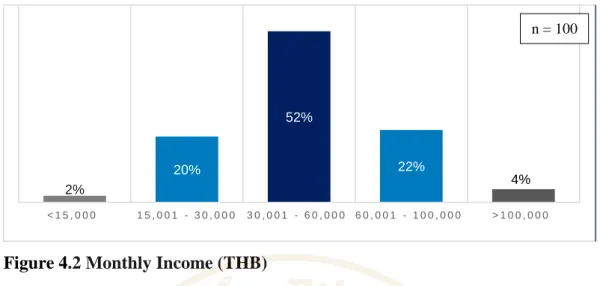
CONCLUSION AND RECOMMENDATIONS
Conclusions
Limitations
Recommendations
Journal of New Communications Research Content-influencer fit: Improving the reach and impact of content for influencers in eWOM.
APPENDICES
Appendix A: Questionnaire
- Screening information
- General information
- Specific question
- Demographic information 8.What is your gender?
5. What social media platforms do you often expose to online beauty influencers? you can choose more than one answer that applies). 6. How do you view online beauty content from social media influencers? you can choose more than one answer that applies).
